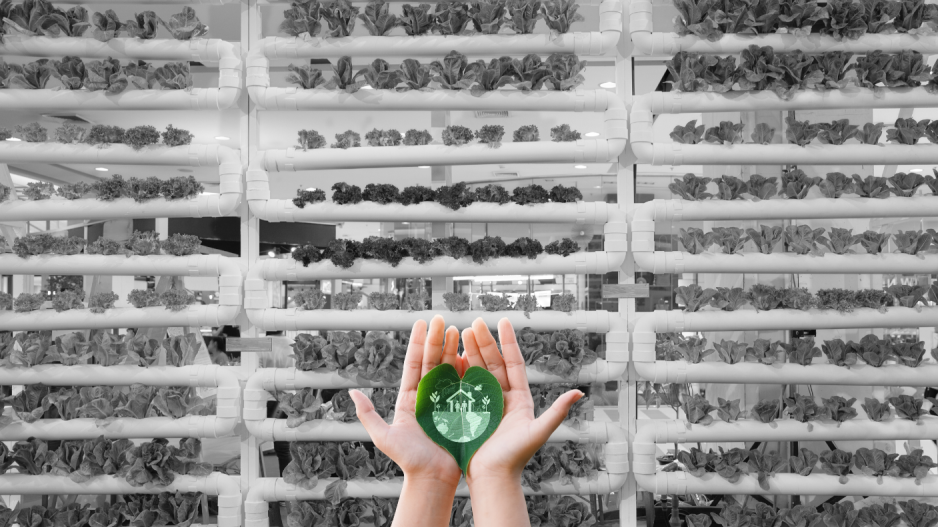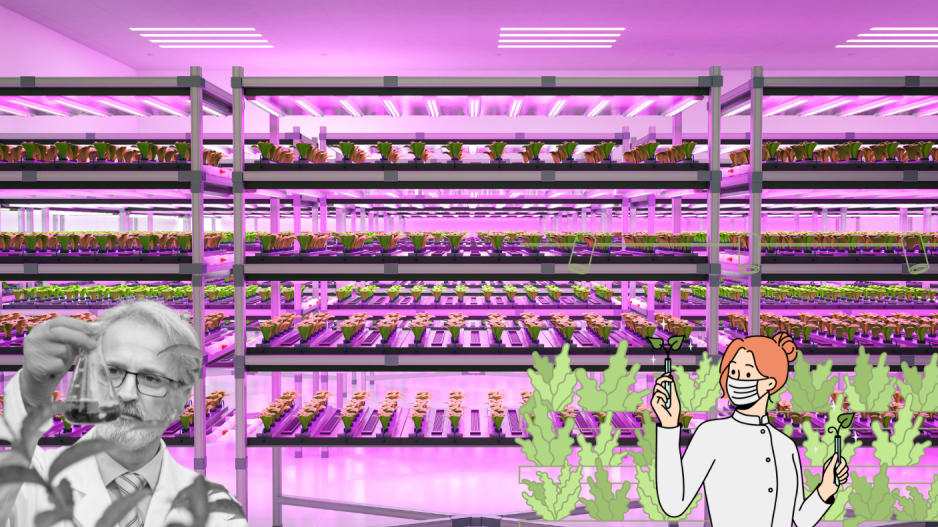Is the Future of Farming in Cyprus Vertical?
You’ve just entered a room with tall ceilings, lit with LEDs, plants lining shelves stacked several meters high, and foliage lining walls with fluorescent lights. This is not an image of a vegetarian's dream electronic dance party setting, rather, it is a vertical farm. The practice of stacking plants vertically allows for a much higher yield in a greenhouse compared to farming on a land area.
Vertical farming proposes solutions to responsible use and consumption of energy, creating possibilities for improved treatment of our environment. It is a practice whereby multiple shelves house recycled plastic production trays with the roots of plants and vegetable seeds set in water. Since it is in an enclosed space, LED lights are used to replace sunlight and to assist growth.
The water used is circulated in a loop system, ensuring that the water is not wasted. The Food Sustainability Index highlights that “vertical farms need between 2 and 4 liters of water to produce 1kg of tomatoes, significantly less than that required of a greenhouse in The Netherlands (16 liters) or a field in southern Europe (60-200 liters), accord to Leo Marcelis, professor of horticulture at Wageningen University and Research in the Netherlands.”
Considering the ever-growing global population, the demand for fresh produce is increasing at an unprecedented rate. Traditional agricultural methods are struggling to keep up with the demand, and issues such as climate change, soil degradation, and limited arable land are making it increasingly difficult to sustainably produce enough food.
Vertical farming and hydroponics offer a promising solution to this problem. Hence, the vertical farming market is predicted to hold and generate immense value, as seen in Statista’s projection of the market from 2021 to 2026, based on a CAGR of 24.3%.
Countries and organizations globally are looking to harness and improve this technology and farming technique to reduce food waste, pollution, and further elevate the quality of food and access to food for people globally. The Netherlands, or Holland, and Dubai have been making waves in this field.
The Netherlands is a relatively small country, with unfavorable harvesting conditions. However, it is ranked as the second largest agricultural exporter globally, as noted in data from Statista, where it grossed a total of $79 billion in agricultural exports in 2020.
Holland is at the forefront of using vertical farming and hydroponics to revolutionize the agriculture industry. The country has been experimenting with these innovative techniques for decades, and its success has drawn international attention. Washington Post’s business of food reporter, Laura Reiley writes, “the Dutch have pioneered cell-cultured meat, vertical farming, seed technology and robotics in milking and harvesting - spearheading innovations that focus on decreased water usage as well as reduce carbon and methane emissions.”
Improving how food is grown has been a factor of efficiency for the agriculture sector in The Netherlands. Rather than increasing their use of land for farming, which was at 54% of the country in 2020 according to data from the World Bank, agriculture businesses looked to increase the yield from each hectare.
Vertical farms have proven to top this efficiency. The BBC’s Science and Focus arm highlighted that “a vertical farm can fit the equivalent of 280 hectares (700 acres) of farmland in a building the size of a large supermarket, and by manipulating the artificial day length and season, it can harvest crops all year round.”
Through the need to create efficiencies in feeding their population despite the challenges faced in growing food, the Dutch have led global efforts in vertical farming. They achieve this through technological innovation to support and improve vertical farms.
One example, PlantLab, is an indoor farming platform, and secured €50 million funding in a funding round led by venture capital firm, De Hoge Dennen Capital. Eelco Ockers, PlantLab’s CEO, stated in an interview with Silicon Canals that, “this innovative technology will enable us to shape the future food supply of our planet for many years to come… Our production location in Amsterdam has already proven that the technology is very suitable for large-scale urban farming.”
According to the UN, 68% of the global population is projected to live in urban areas by 2050. To accommodate this change, researchers are turning to urban farms, and vertical farms seem to lead the way in these efforts. Notably, Dubai aims to become a center for vertical farming, and has invested in research and development efforts to bring this goal to fruition.
Dubai, a city built within the Arabian Desert, is very small and due to its climate and land, farming is essentially impossible. Dubai resides within the United Arab Emirates which imports 85% of the food it consumes, according to Australia’s Department of Agriculture, Fisheries, and Forestry.
However, recently, Dubai has developed a vast vertical farm where more than two million pounds of vegetables are projected to grow every year. The Fast Company notes that, “the farm, called ECO 1, is now the largest vertical farm in the world, with more than 330,000-square-foot facility.” The article continues to highlight that “the facility also uses 95% less water than is required to grow greens in a field, and no pesticides or herbicides.”
A small city built within a desert that is almost entirely urban turned to vertical farming, proving that the way toward efficient and sustainable farming is paved vertically, and not horizontally. Does this mean that we could see it happen in Cyprus as well?

Similar to The Netherlands and Dubai, Cyprus is small in size, and its weather conditions pose challenges to conventional farming methods. The use of pesticides and herbicides increased considerably in Cyprus between 2011 and 2019. According to Eurostat, Cyprus showed the highest increase in pesticide sales in the 8 year period, at a rate of 101%.
Noting that vertical farming excludes the use of pesticides and herbicides, the practice may prove to bring a favorable change in how the island approaches sustainability and improves its farming methods.
The vertical farming seed has been planted in Cyprus, brought by a small, family-run startup called HerbanLeaf Farms. Though they are not a vertical farm, they grow their plants and vegetables within a large shipping container with hydroponic and vertical farming practices. They require 95% less water than traditional farming methods, and monitor and control the indoor conditions in which the plants grow, resolving the intense climate conditions present across the island.
Dr. Dimitris Tsaltas, Associate Professor at Cyprus University of Technology (CUT) shared his insights with us regarding the need for vertical farming, its potential impact on infrastructure and agriculture, and CUT’s ambition to influence the future of vertical farming in Cyprus. “Cyprus is very much in need of vertical farming and the sooner we adopt this technology the better for our country with the massive sustainability problems, observing our daily activities.
Cyprus is very much in need of vertical farming and the sooner we adopt this technology the better for our country
Our urbanism and continuous enlargement of cities requires bringing food production closer in order to have more available food of better quality (freshness primarily) and with less environmental impact as the sole transportation vehicle are cars still running mainly with petrol or diesel.
Our soils are at the worst EU level, with strong desertification, salinized especially at the coastline and in many regions contaminated with long use of pesticides, mineral fertilizers and other manmade pollutants.
CUT is very interested to invest in such technologies although the University is facing two major restraints. Firstly, a lack of space to develop research facilities in the short and medium time frame; and secondly, limited state funding for such infrastructure. It is with slow pace that a young state realizes the importance of local food production via its own research and innovation initiatives. This requires the convincing support of all including investors and donors”
While vertical farming has not yet taken root in Cyprus, it may become a necessity to adjust to and combat rising global climate change concerns. As the world turns to vertical farming and continues to seek efficient and sustainable urban farming methods, the question remains if Cyprus will take the necessary steps to stake its claim in this agricultural revolution. Taking examples from The Netherlands and Dubai, Cyprus has ample opportunity to establish a vertical farm location which could improve its efforts in creating a more sustainable future.






